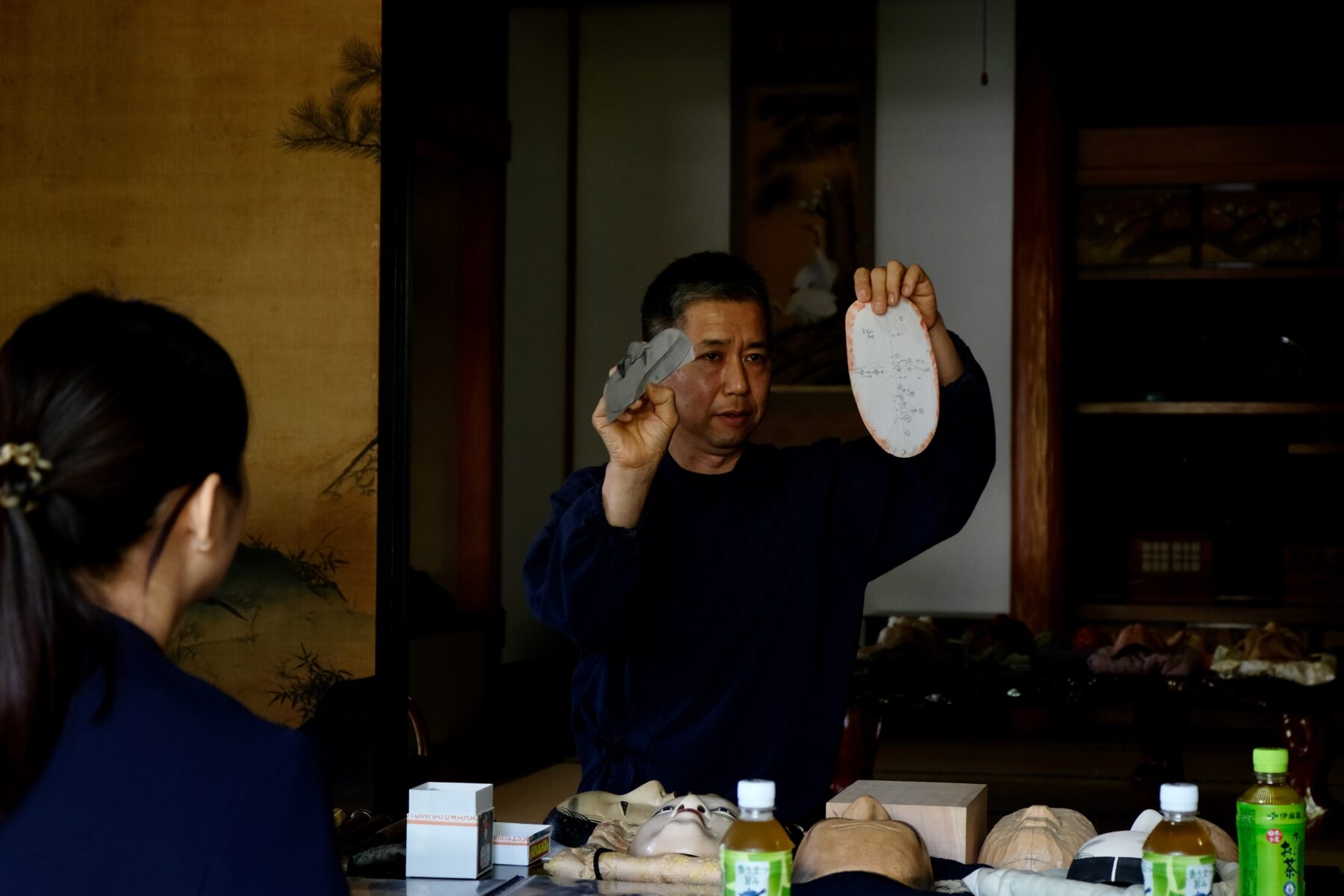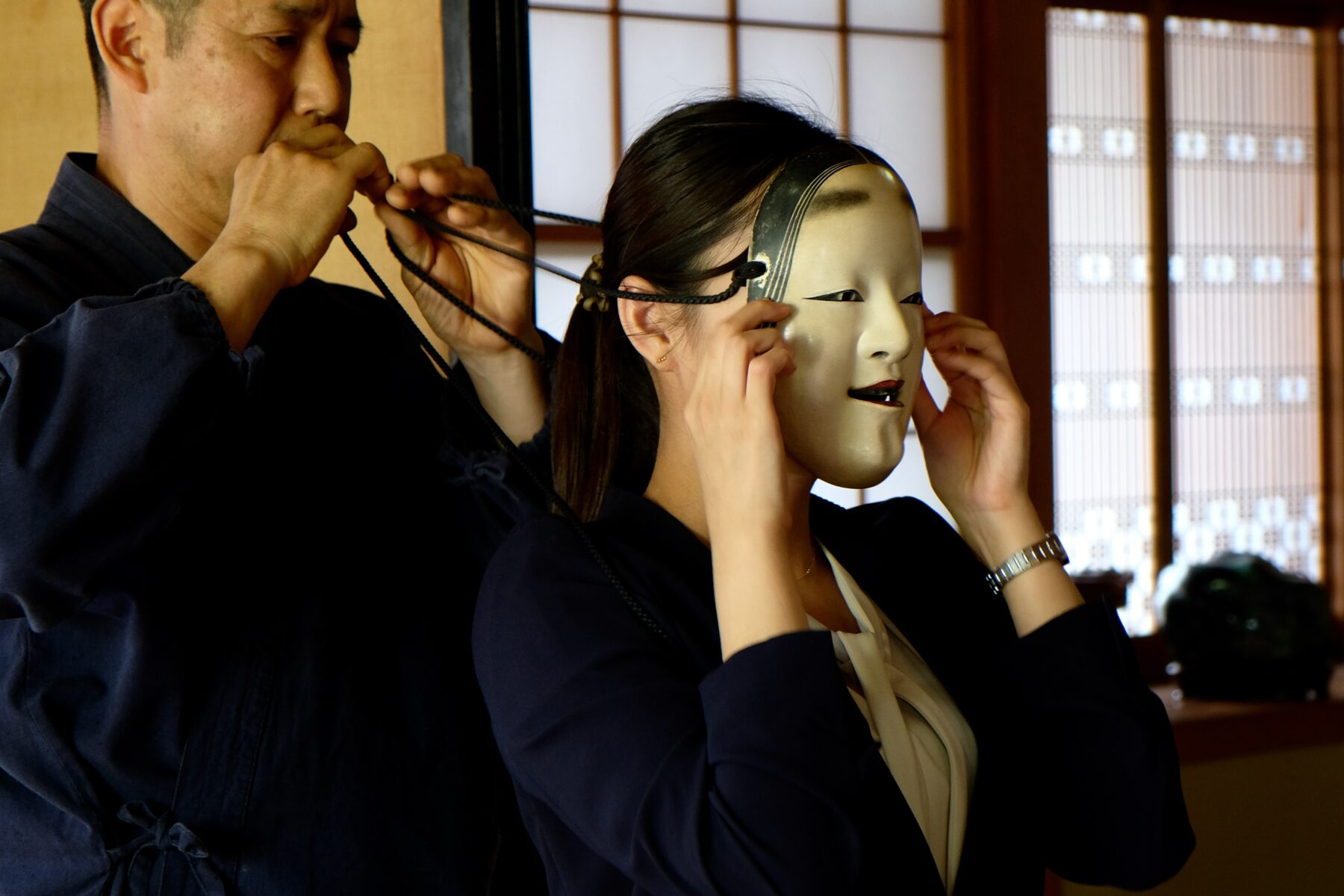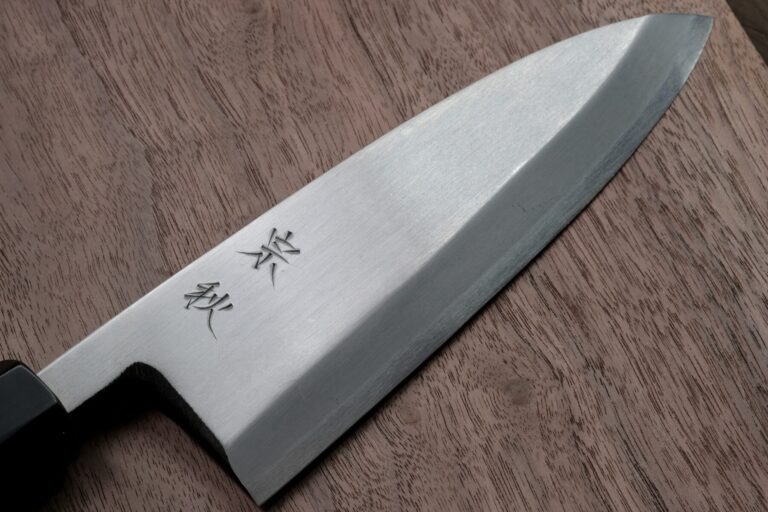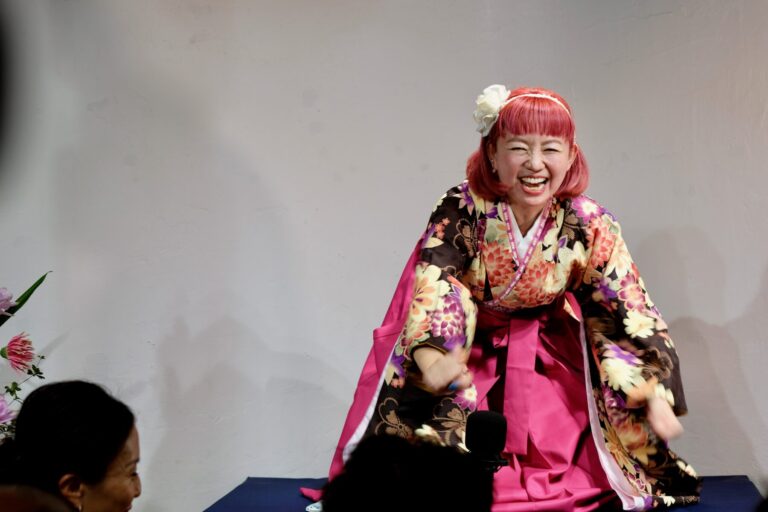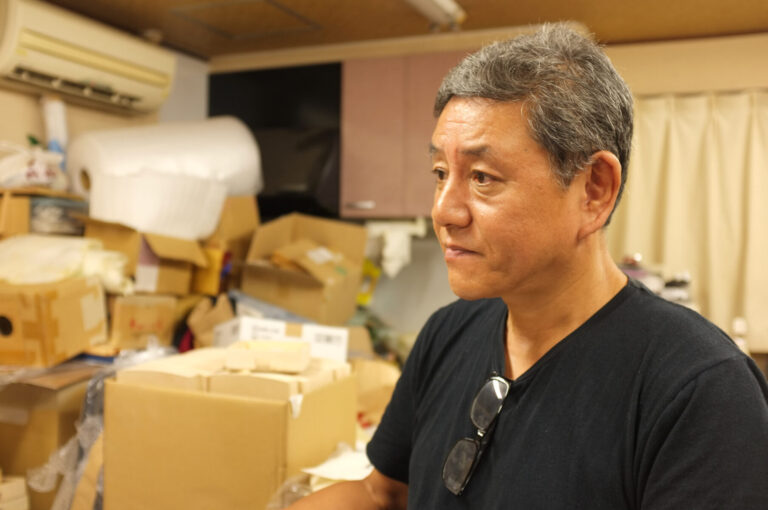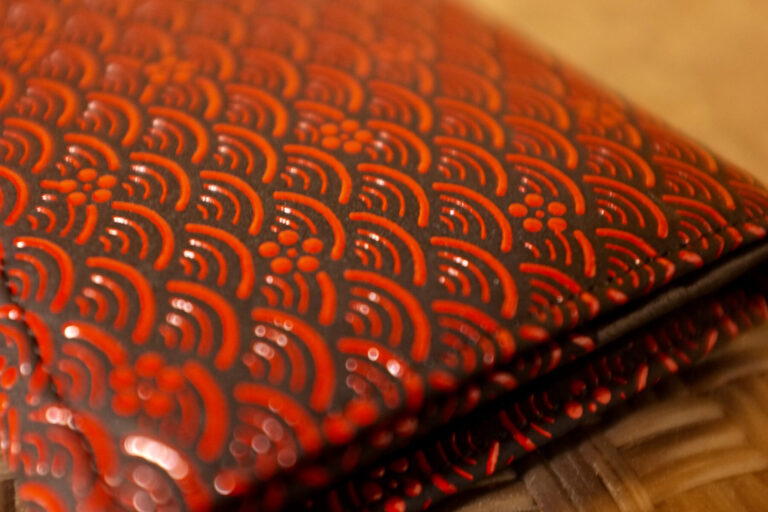The Allure of Japanese Noh Masks: The Masterful Artistry of Hideta Kitazawa
Introduction
The rich cultural tapestry of Japan is adorned with countless artistic treasures, each offering a glimpse into the nation’s captivating heritage. Among these gems, Noh masks occupy a prominent position, showcasing the profound tradition and artistry of Japan’s theatrical world. These enigmatic masks, used in the classical Japanese theatrical form known as Noh, hold a fascinating allure, capturing the essence of characters, emotions, and the supernatural. In this article, we embark on a journey to explore the captivating realm of Japanese Noh masks, delving into their history, craftsmanship, symbolism, and enduring significance.
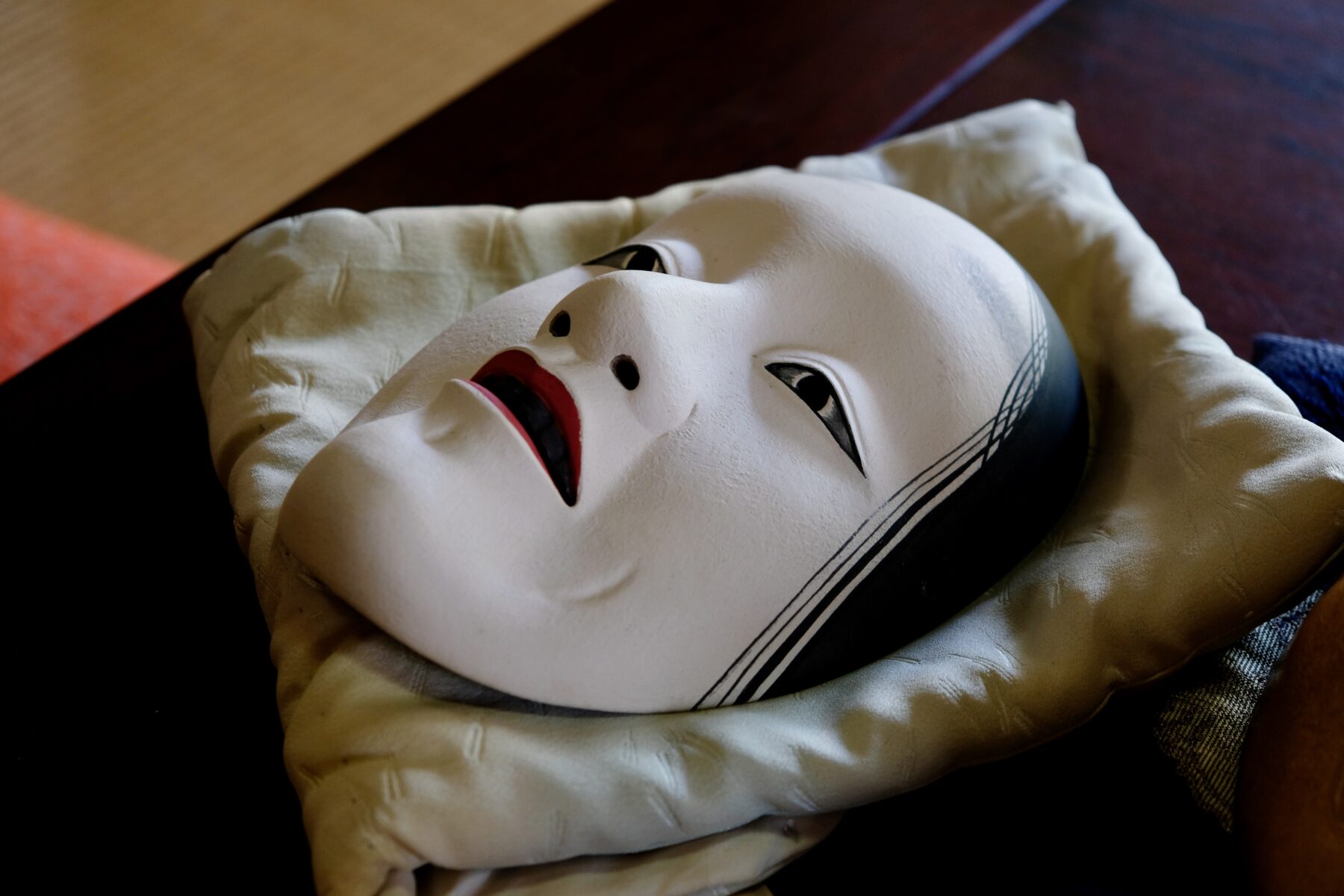
The Enigmatic Beauty of Noh Masks:
Noh, originating in the 14th century, is a highly stylized and refined form of classical Japanese theater. It integrates elements of drama, dance, music, and poetry to create a unique and mesmerizing performance. Central to the visual aesthetics of Noh is the masks, meticulously crafted to express a wide range of emotions and portray various characters, both human and supernatural. These masks, made from wood, lacquer, and pigments, serve as windows into the spirit of the characters they represent.
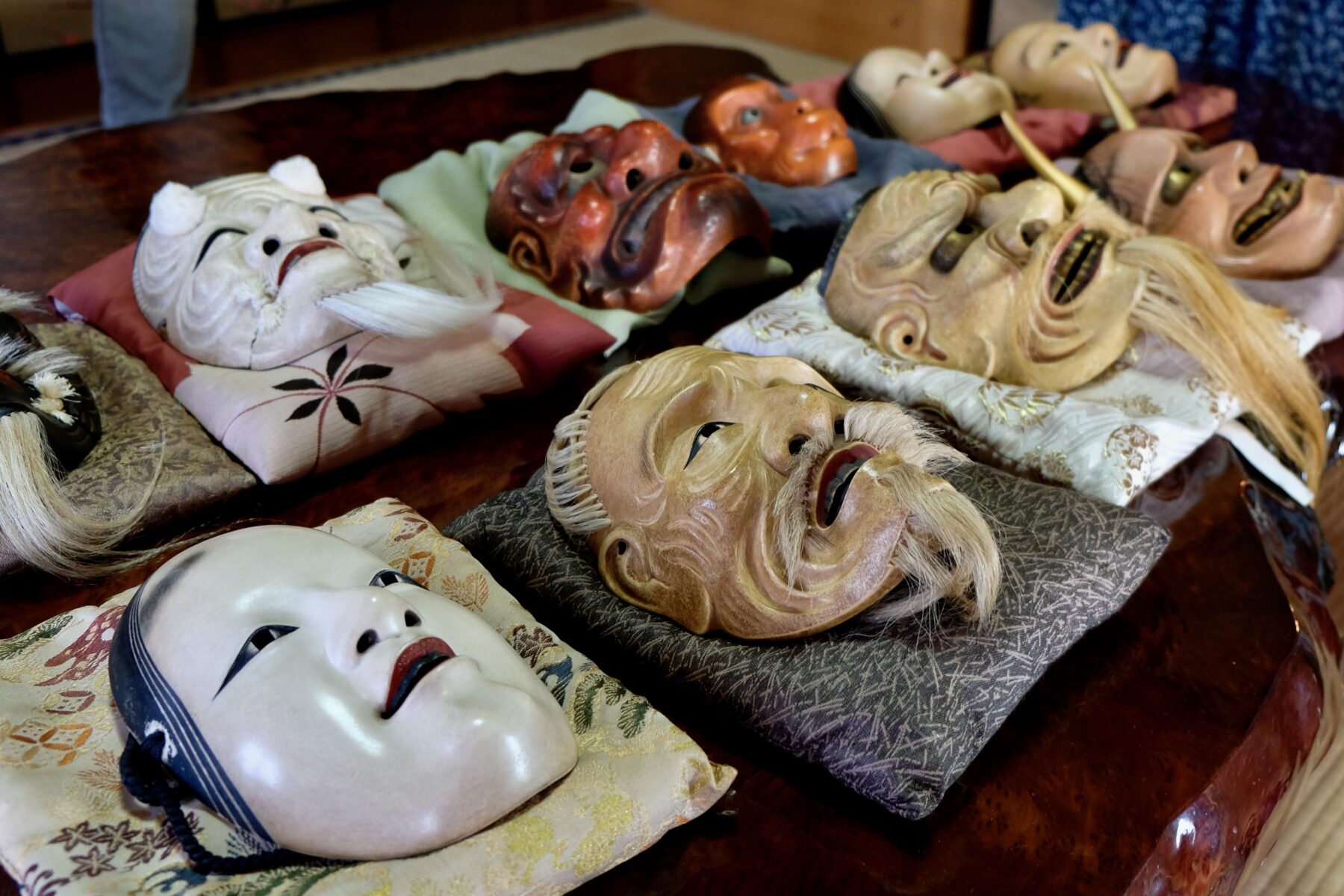
Craftsmanship Behind the Masks:
Creating a Noh mask is a complex and intricate process requiring skilled artisans’ expertise. Each mask is individually hand-carved, meticulously sculpted to capture the essence of the character it embodies. The traditional materials used in mask-making are carefully selected to ensure durability and aesthetic appeal. Hinoki, a type of cypress wood known for its fine grain and resilience, is commonly used as the base material. Layers of natural lacquer are then applied, allowing the mask to achieve a smooth and polished surface. Finally, the intricate facial features, such as eyes, eyebrows, and mouth, are delicately painted using natural pigments.
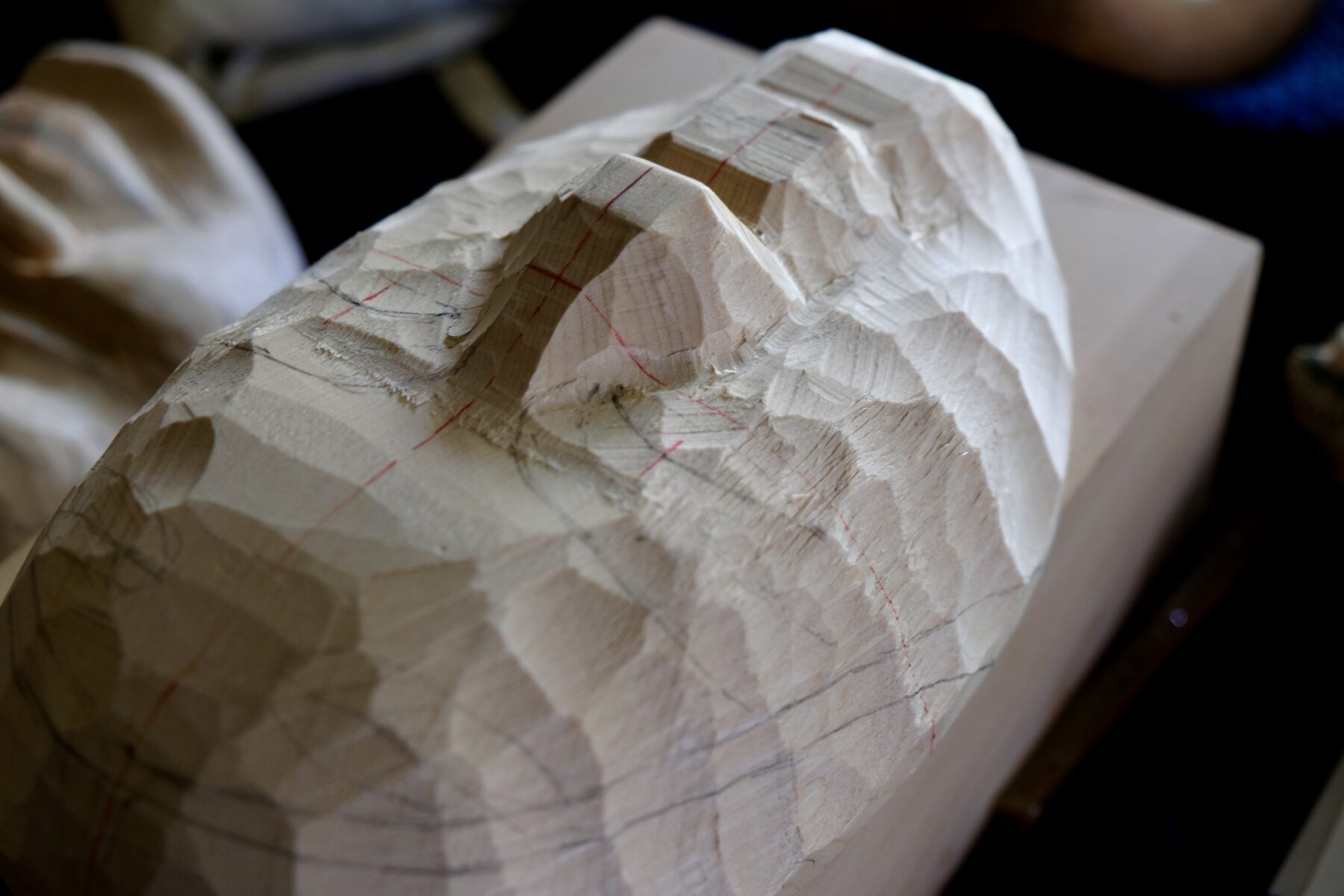
Symbolism and Design
One of the distinguishing characteristics of Noh masks is their simplicity and stylized representation. Rather than aiming for realistic portrayal, these masks emphasize the symbolic essence of the characters. The facial expressions are intentionally restrained and subtle, allowing the audience to interpret the emotions conveyed through minute details such as the head’s tilt or the eyes’ positioning. This understated approach grants the masks a timeless quality, transcending the boundaries of specific eras or cultural contexts.
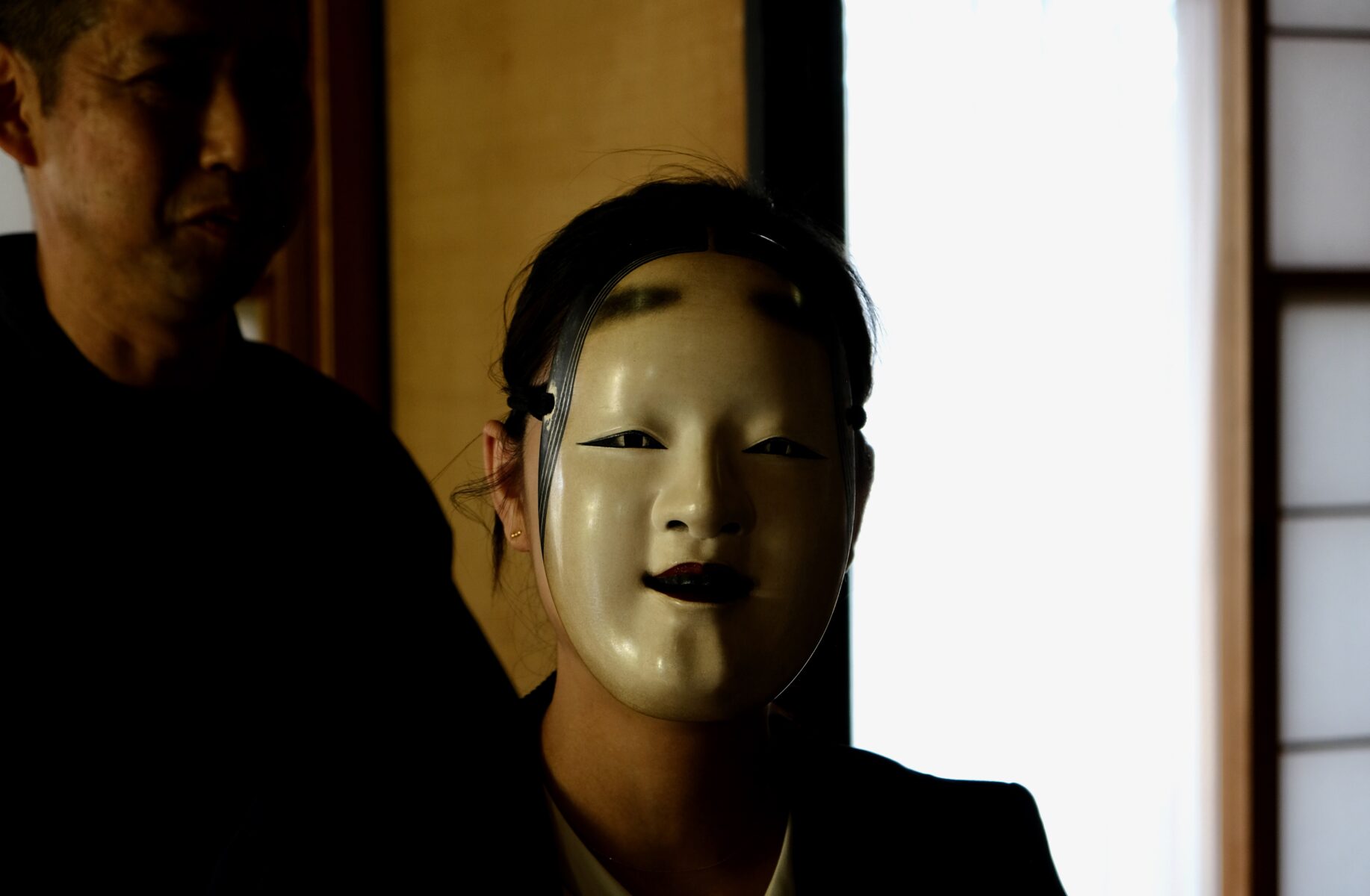
The Haunting Beauty of the Hannya Mask
Noh masks encompass various character types, each with a unique design and symbolic significance. The Shite masks represent the main characters, typically depicting gods, demons, spirits, or older men. The expressions on these masks vary, ranging from tranquil to fierce and menacing, reflecting the multifaceted nature of their roles. The Waki masks, on the other hand, portray secondary characters such as warriors, priests, or deities. These masks often feature more subdued expressions, symbolizing the characters’ supportive roles in the narrative.
One of the most iconic Noh masks is the Hannya mask, renowned for its haunting beauty and enigmatic allure. The Hannya represents a female demon consumed by jealousy and vengeance. Its piercing eyes, furrowed brows, and twisted expression epitomize the torment and anguish of the character. The Hannya mask is often associated with the play “Dōjōji,” a tale of a scorned woman transformed into a vengeful spirit. With its intricate details and emotional intensity, this mask captures the essence of the dramatic power inherent in Noh theater.
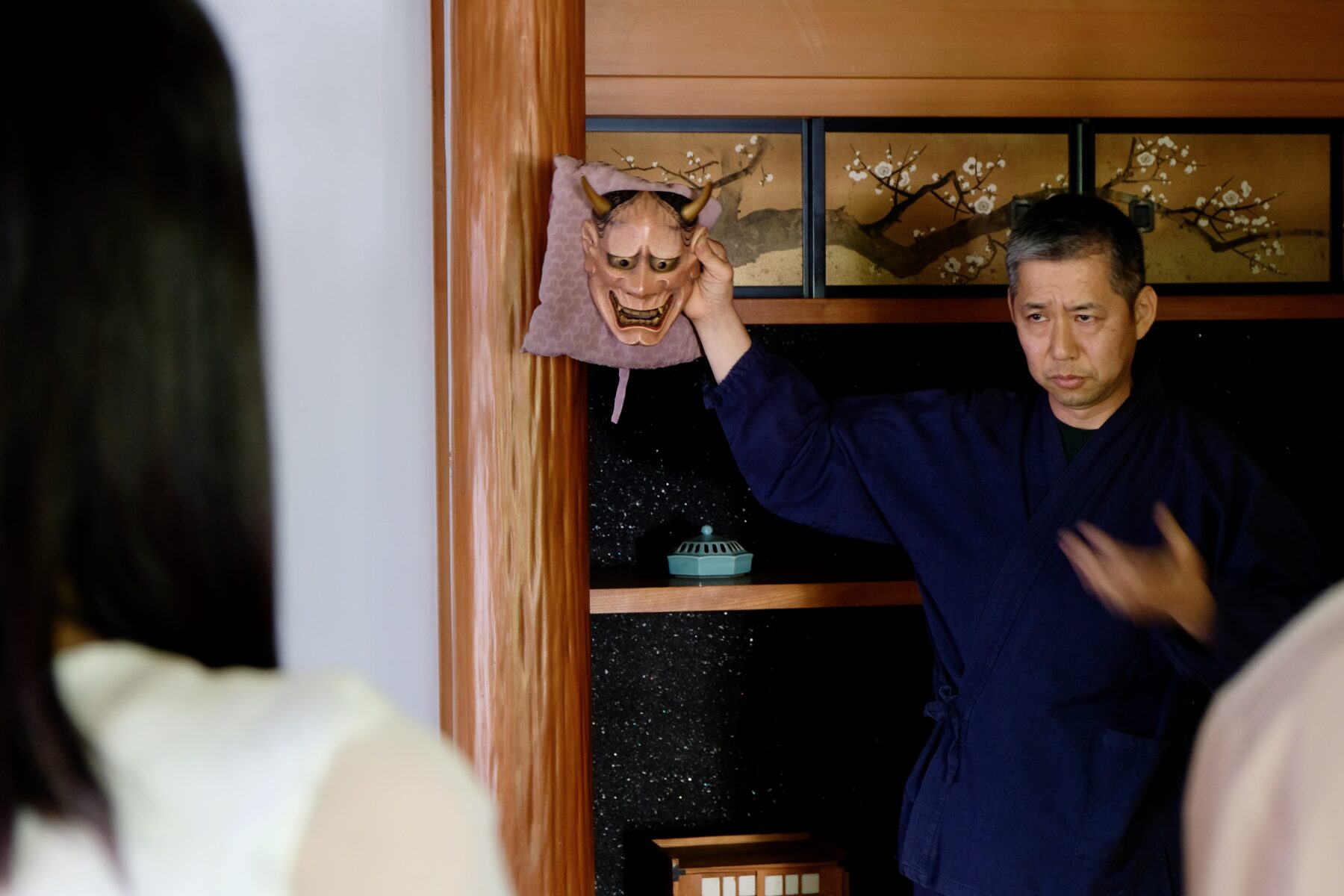
The Masterful Artistry of Hideta Kitazawa
In Noh mask craftsmanship, Hideta Kitazawa is a highly esteemed artisan, representing the younger generation of skilled artists. Born into a family of esteemed artisans, Hideta Kitazawa embarked on his artistic journey by honing his skills under the guidance of his father, Ikkyo Kitazawa, after completing his university education. He further refined his craft by becoming an apprentice to master mask-maker Michihiko Ito. He gained recognition as a skilled mask artisan, finding his place among the renowned Manzo Nomura family of Kyogen performers.
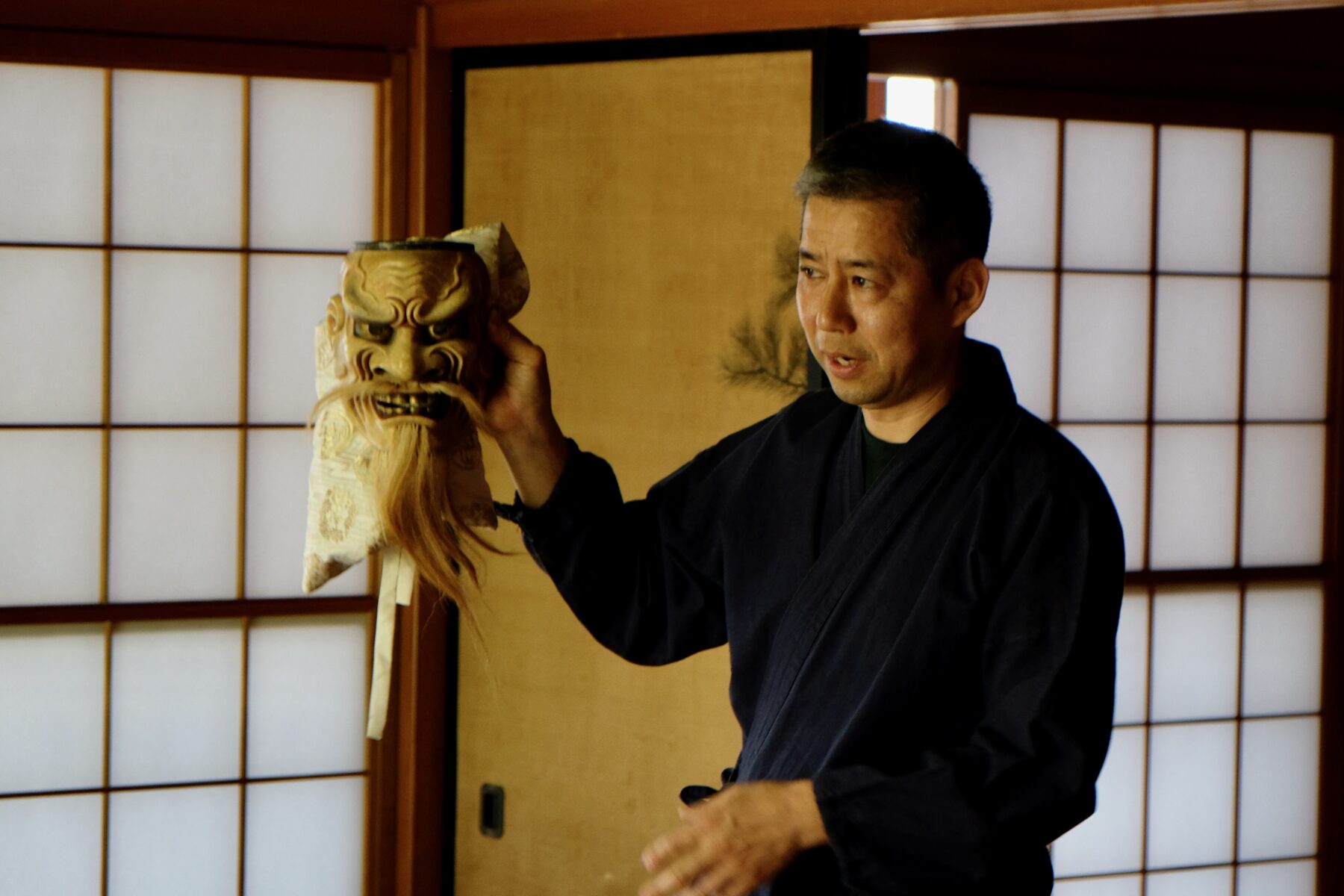
Exploring Kitazawa's exceptional craftsmanship and international recognition.
Noh masks require intricate craftsmanship to ensure actors can fully immerse themselves in their roles. Every detail is meticulously carved, allowing for a depth of expression and emphasizing the interplay of shadows and light. These nuances are essential, especially when masks are viewed from a distance, as they enhance the impact of the performance and enable the masks to effectively convey a wide range of emotions.
Examining Kitazawa’s meticulously carved masks evokes a profound sense of awe. Each mask exudes an air of dignified beauty and a mesmerizing intensity, leaving a lasting impression on those who behold them. Their distinctiveness lies in the ability to evoke a feeling of being seen and understood completely. This captivating sensation is a unique attribute of Noh masks, setting them apart from other forms of artistic expression like paintings or sculptures.
One remarkable achievement that garnered widespread recognition was his involvement in a Noh performance of Shakespeare’s “King Lear” staged by international actors in San Francisco in 2011. Tasked with carving the mask of Cordelia, the lead character, Kitazawa showcased his exceptional craftsmanship by skillfully capturing the profound facial features of non-Japanese actors. His ability to convey the subtleties of emotions received high praise and admiration locally and internationally.
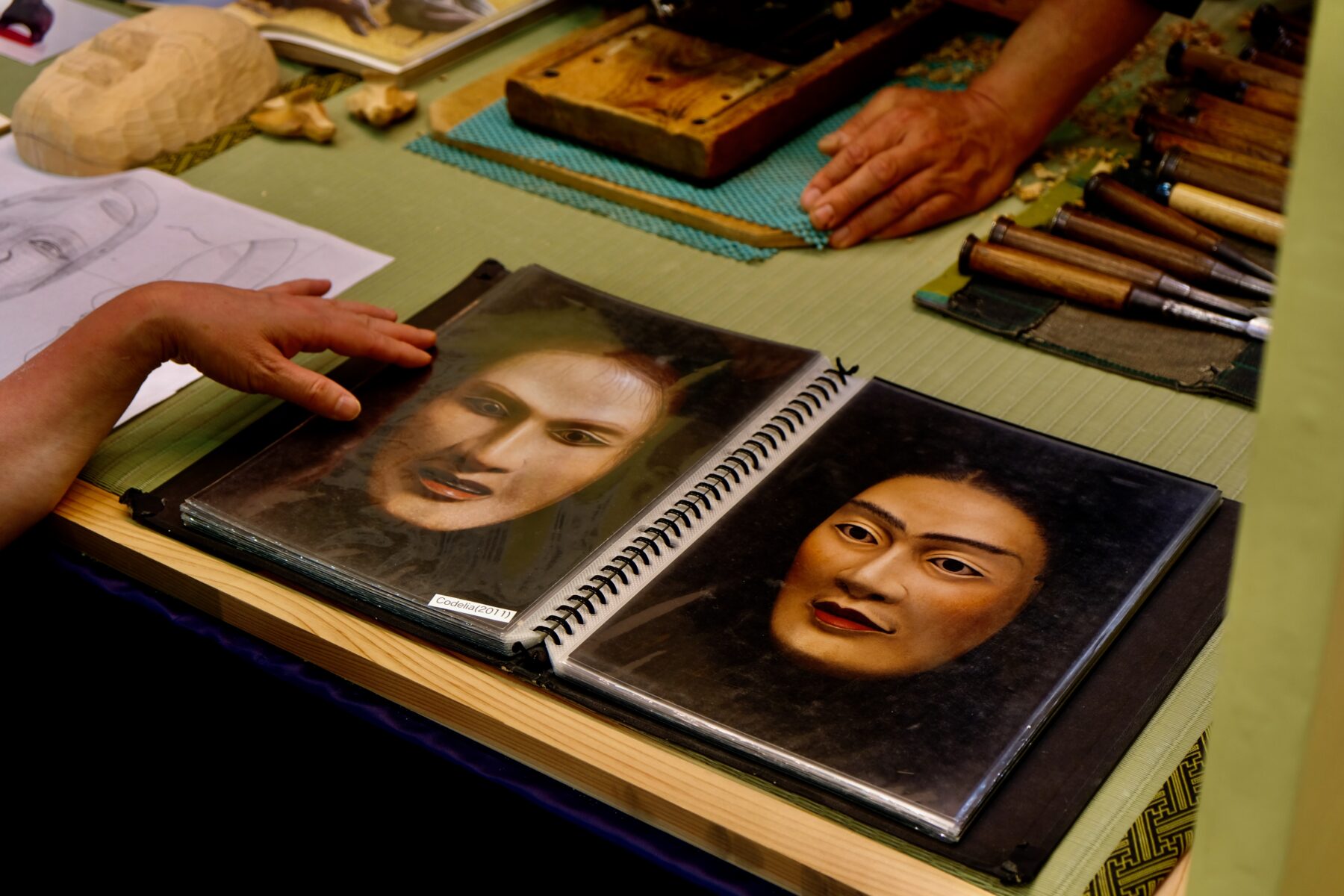
The Artisan Preserving Tradition
Kitazawa’s mastery extends beyond mask-making and encompasses the art of woodcarving and painting. As a result, he is sought after for various endeavors, including restoring Edo-period woodcarvings and receiving requests for lectures, live demonstrations, and workshops at prestigious art museums and universities worldwide. His contributions to preserving and promoting Noh masks have solidified his status as a highly respected figure in the international artistic community.
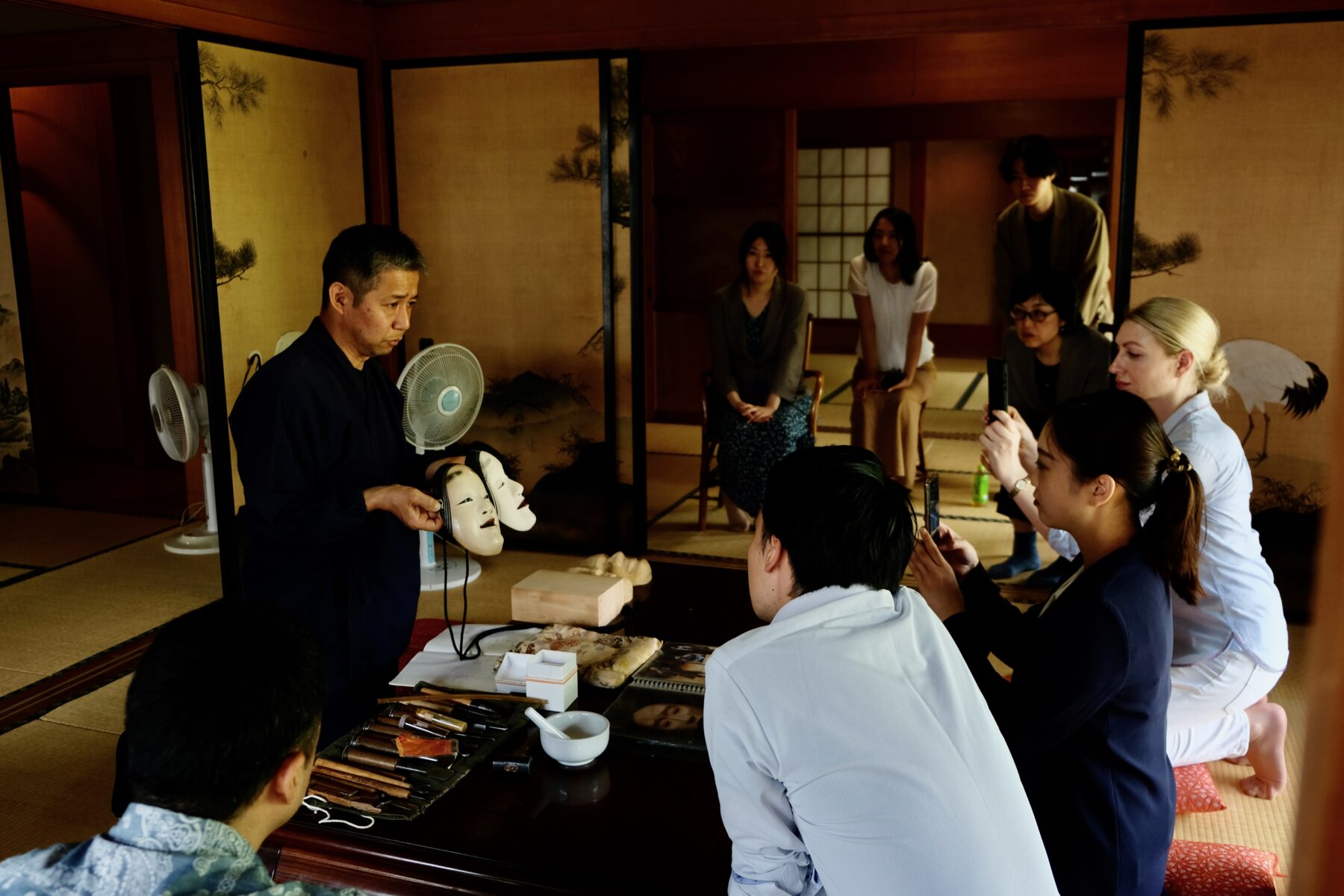
Challenges and Initiatives for Preservation
There has been a growing global interest in Noh masks and the art of Noh theater in recent years. International productions and collaborations have brought this traditional art form to new audiences, fostering a greater appreciation for its beauty and cultural significance. Noh workshops and exhibitions held worldwide allow enthusiasts to learn about the craftsmanship and symbolism behind these incredible masks.
However, preserving Noh masks faces several challenges in the modern era. The declining number of skilled artisans and the limited demand for traditional Noh performances threaten the continuity of this art form. Additionally, mask-making’s high cost and time-consuming nature hinder its accessibility to a broader audience.
Various initiatives are underway to promote Noh masks and make them more accessible to a global audience to address these challenges. Cultural exchange programs, international collaborations, and digital platforms have opened up new avenues for showcasing Noh masks and educating people about their significance. Online exhibitions, virtual performances, and educational resources have become valuable tools in disseminating knowledge and fostering a deeper appreciation for Noh masks worldwide.
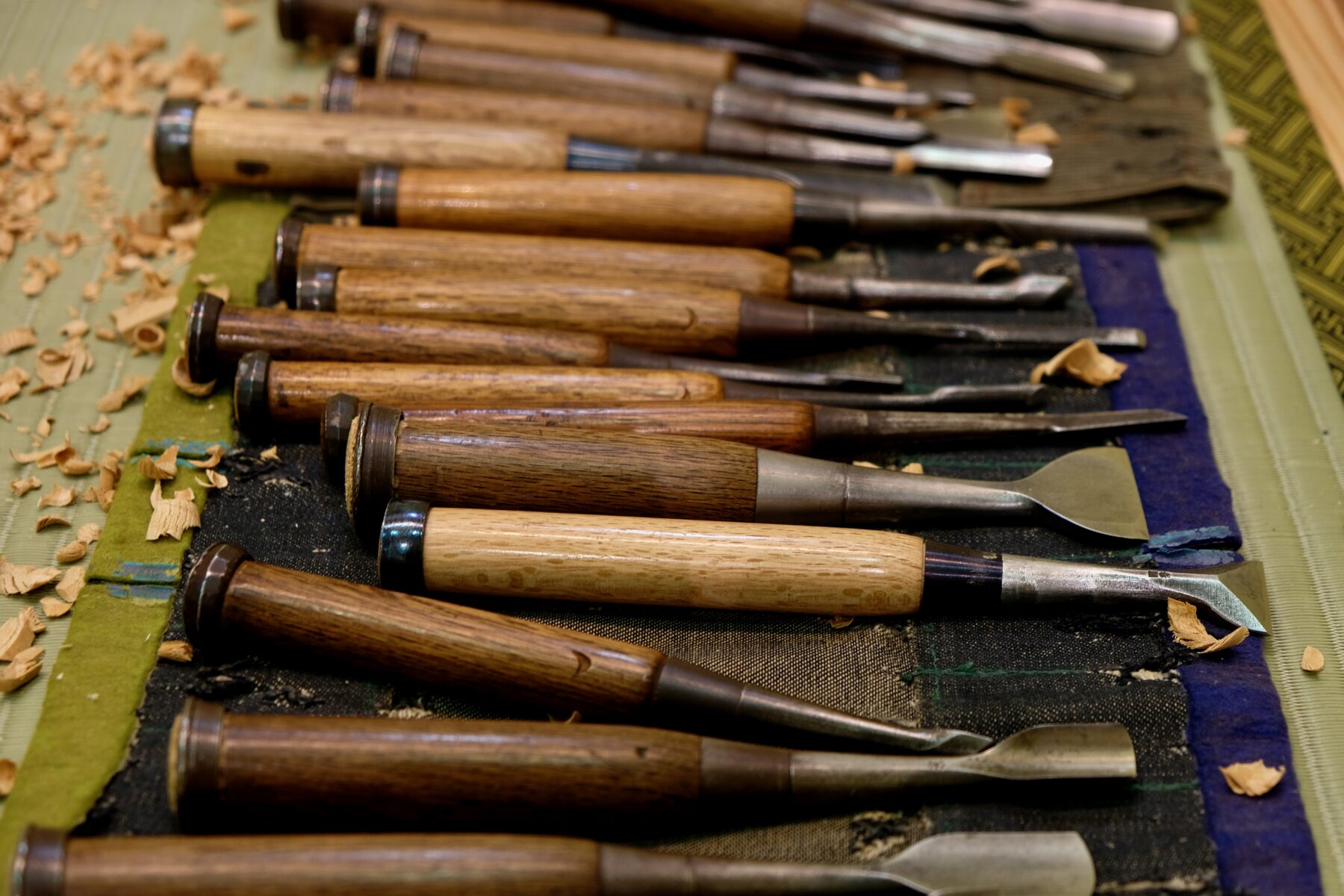
Bridging cultures worldwide
As we conclude our journey through the captivating realm of Japanese Noh masks, we are left in awe of their timeless beauty and cultural significance. These extraordinary masks, crafted with meticulous care, offer a window into the rich heritage of Japan’s theatrical world. Hideta Kitazawa’s masterful artistry serves as a testament to the enduring mastery of Noh mask craftsmanship. Let the allure of Japanese Noh masks transport you into a world of tradition, artistry, and storytelling—an experience that bridges cultures and captivates audiences worldwide.
